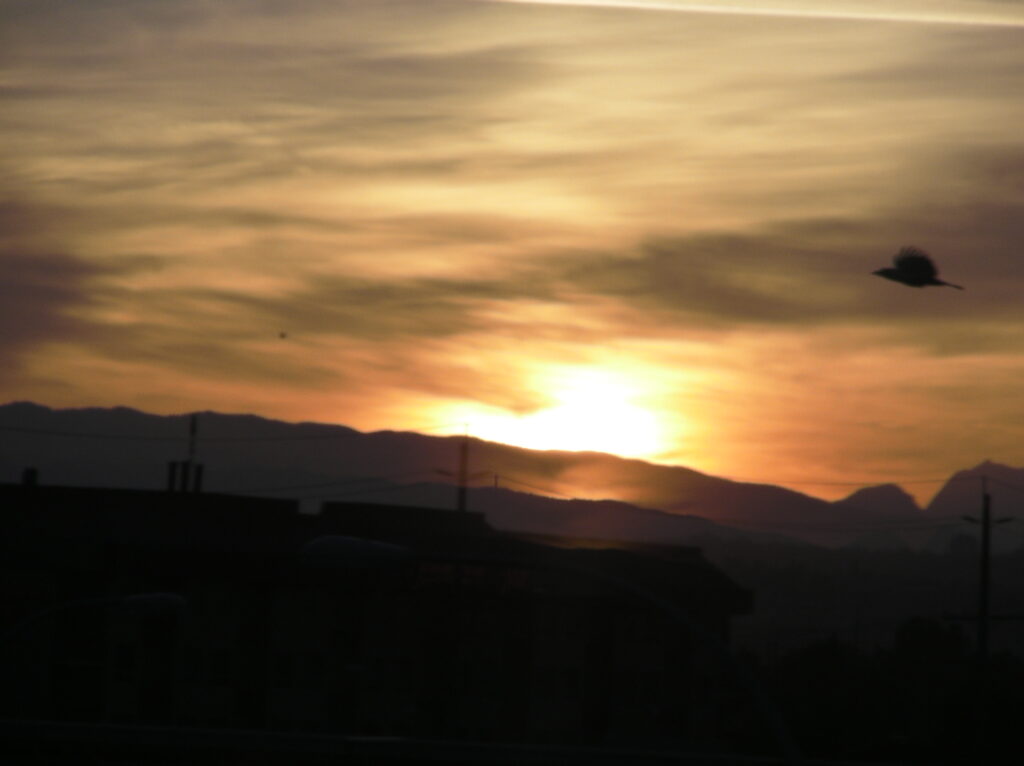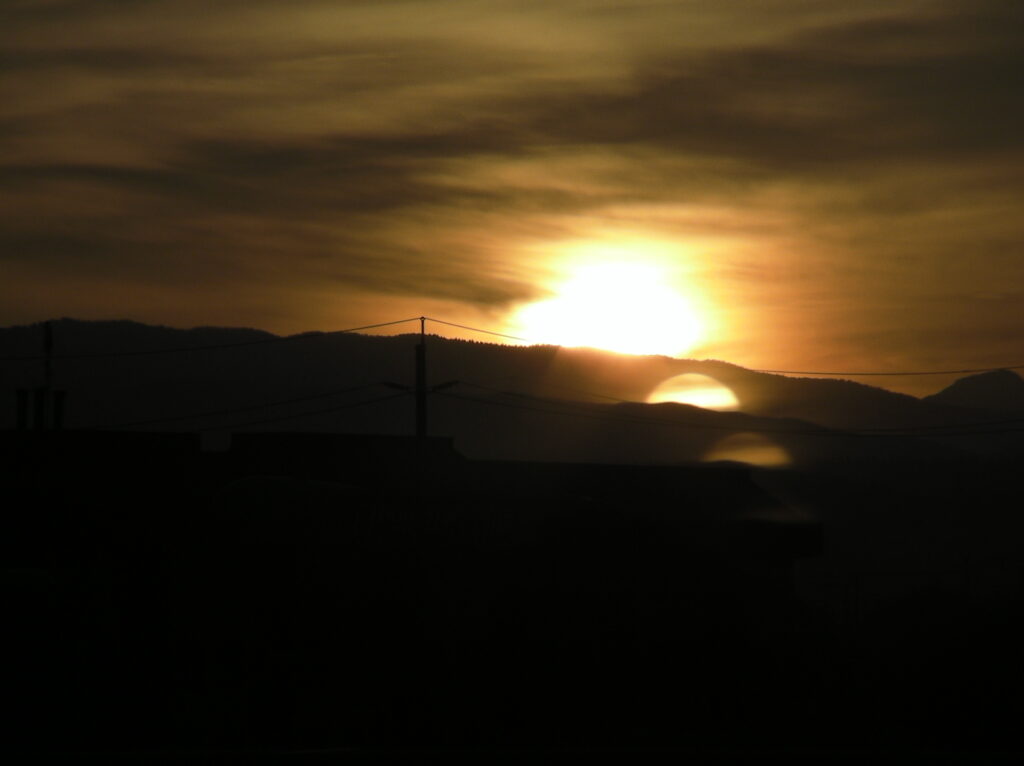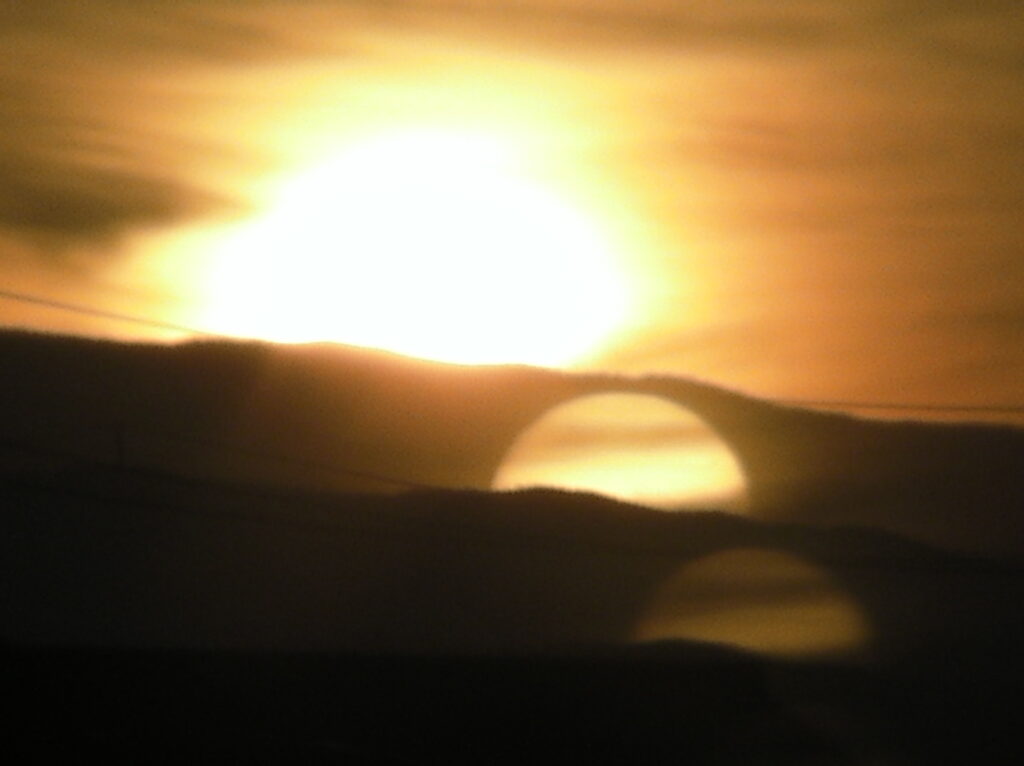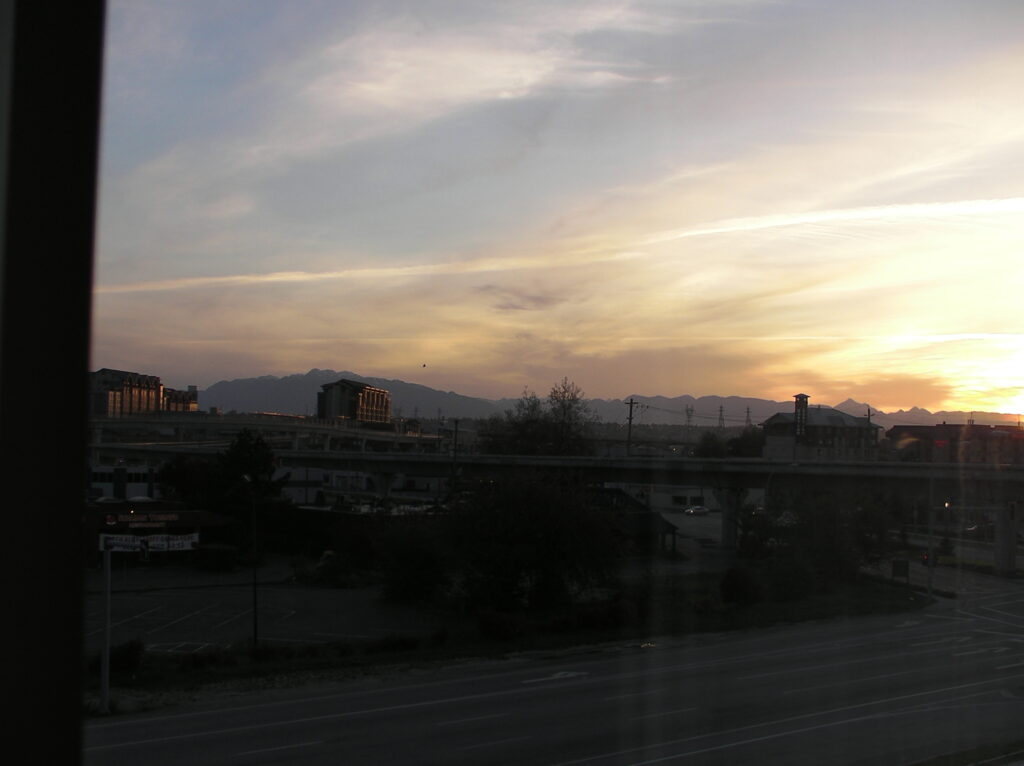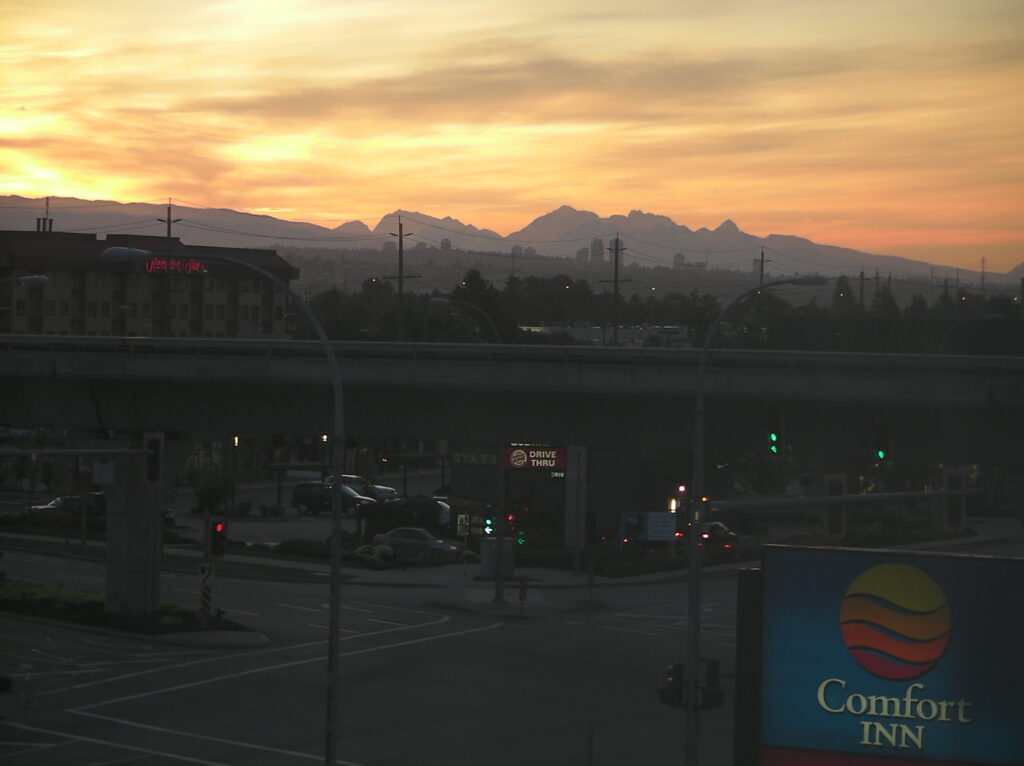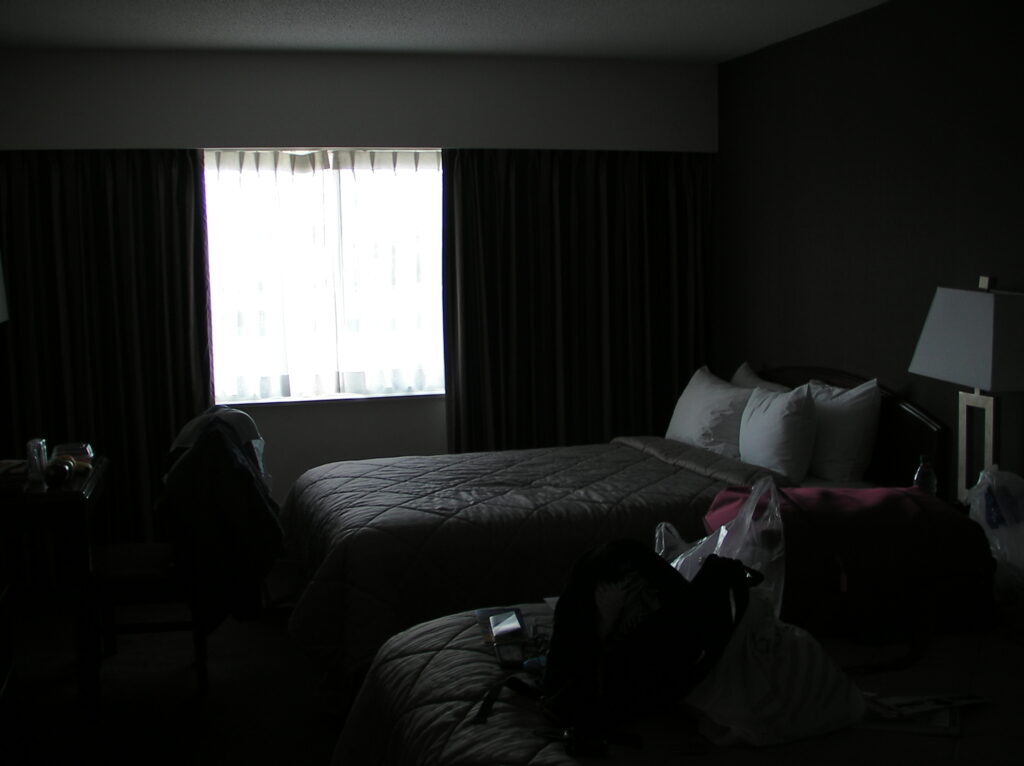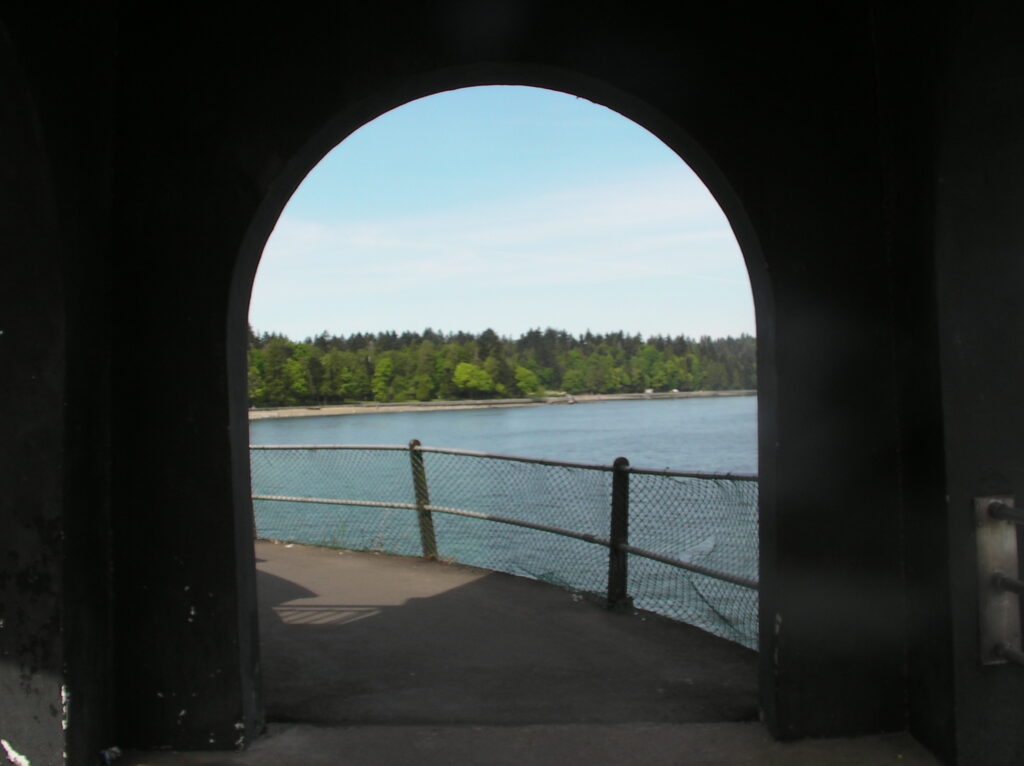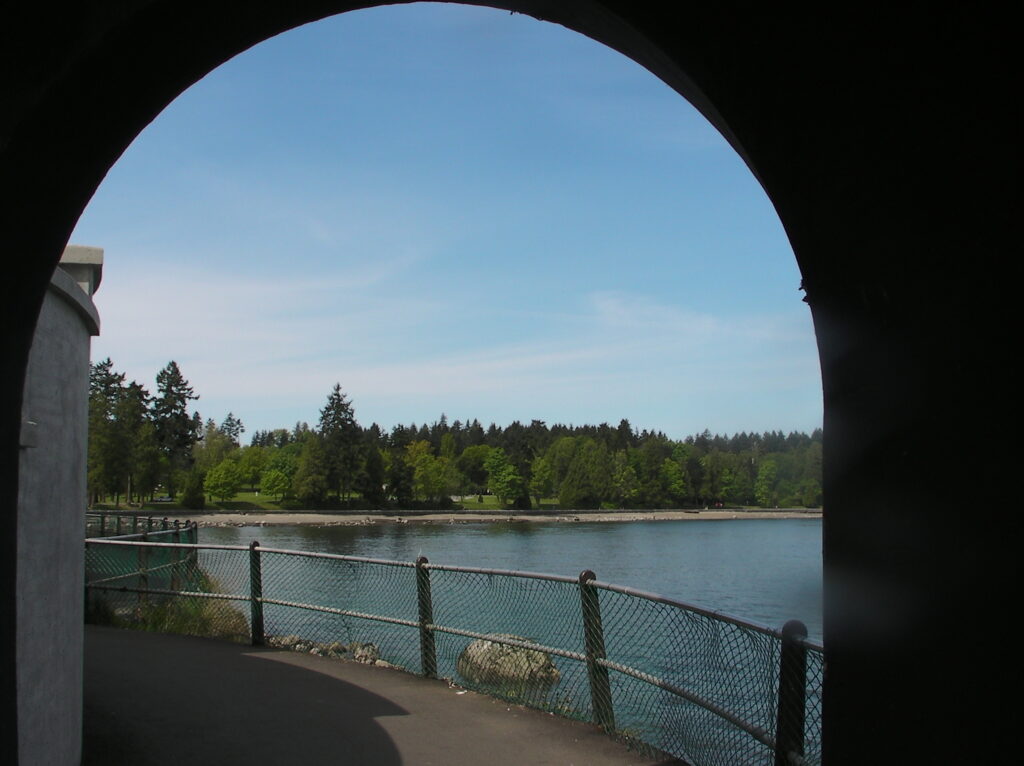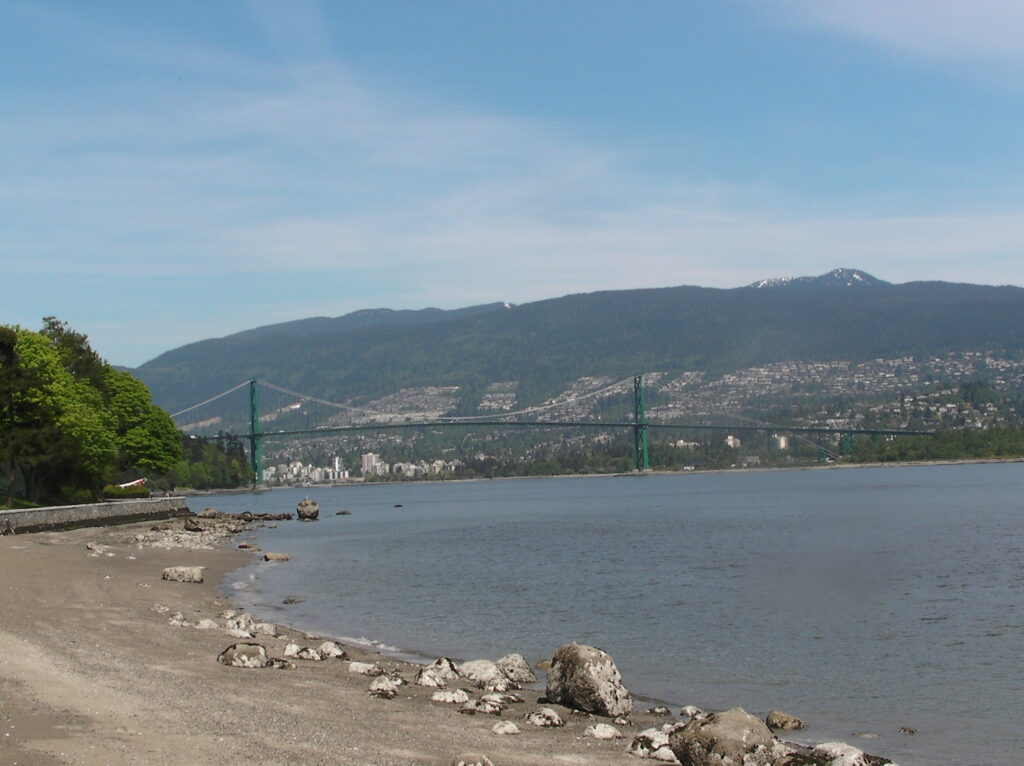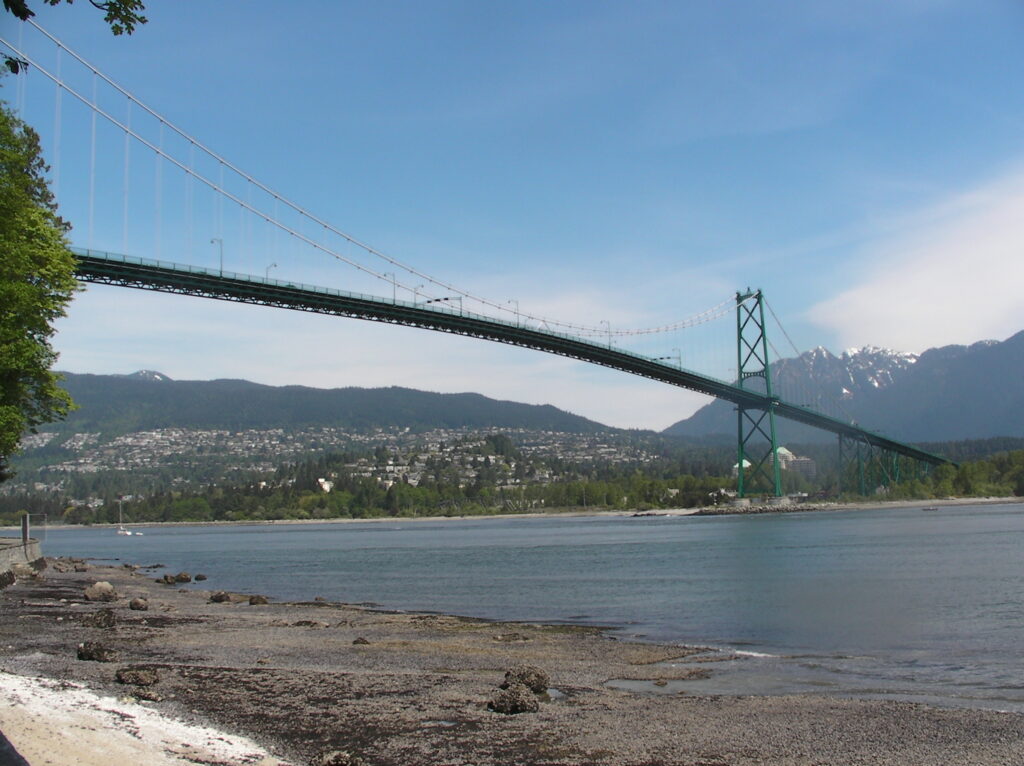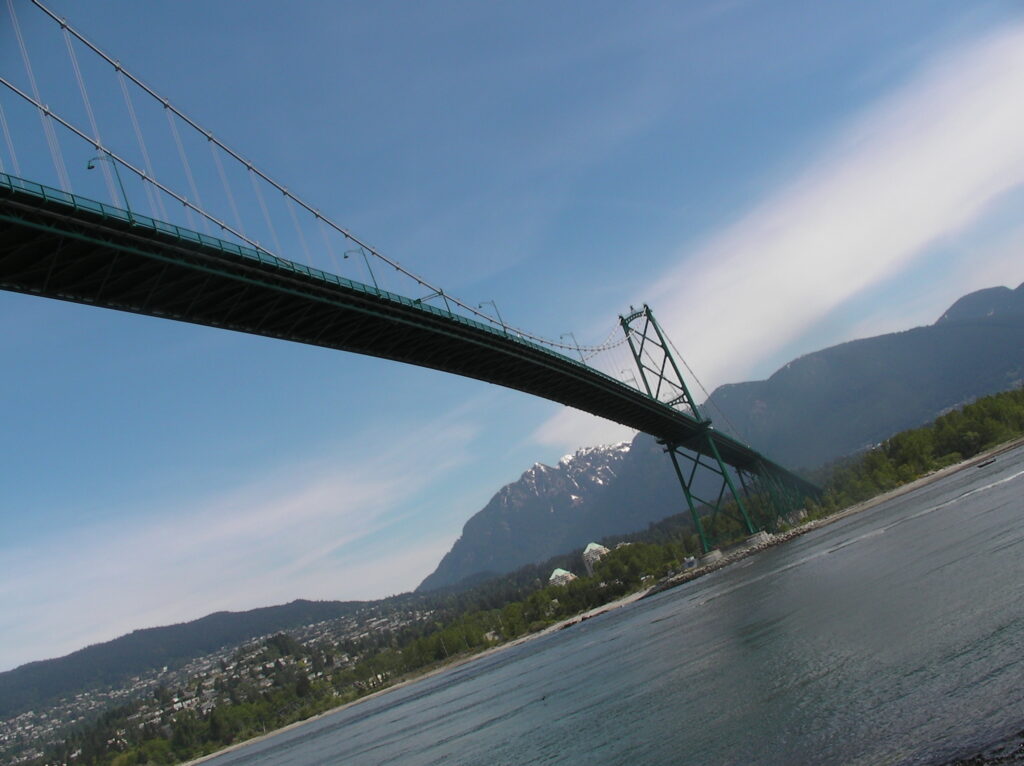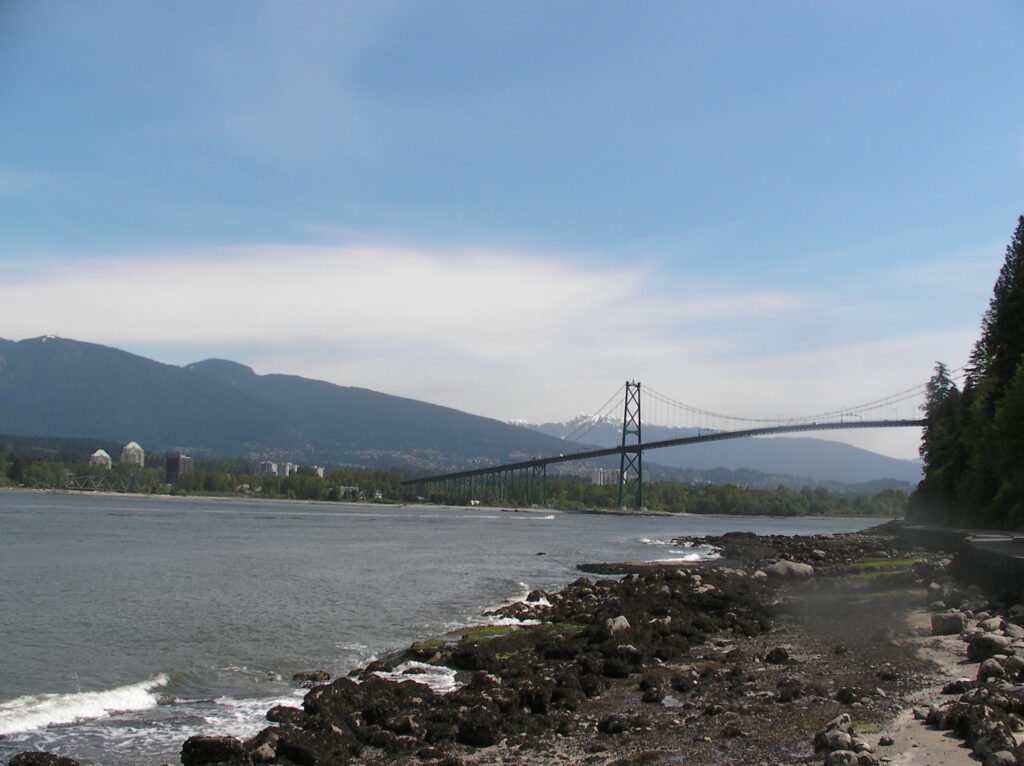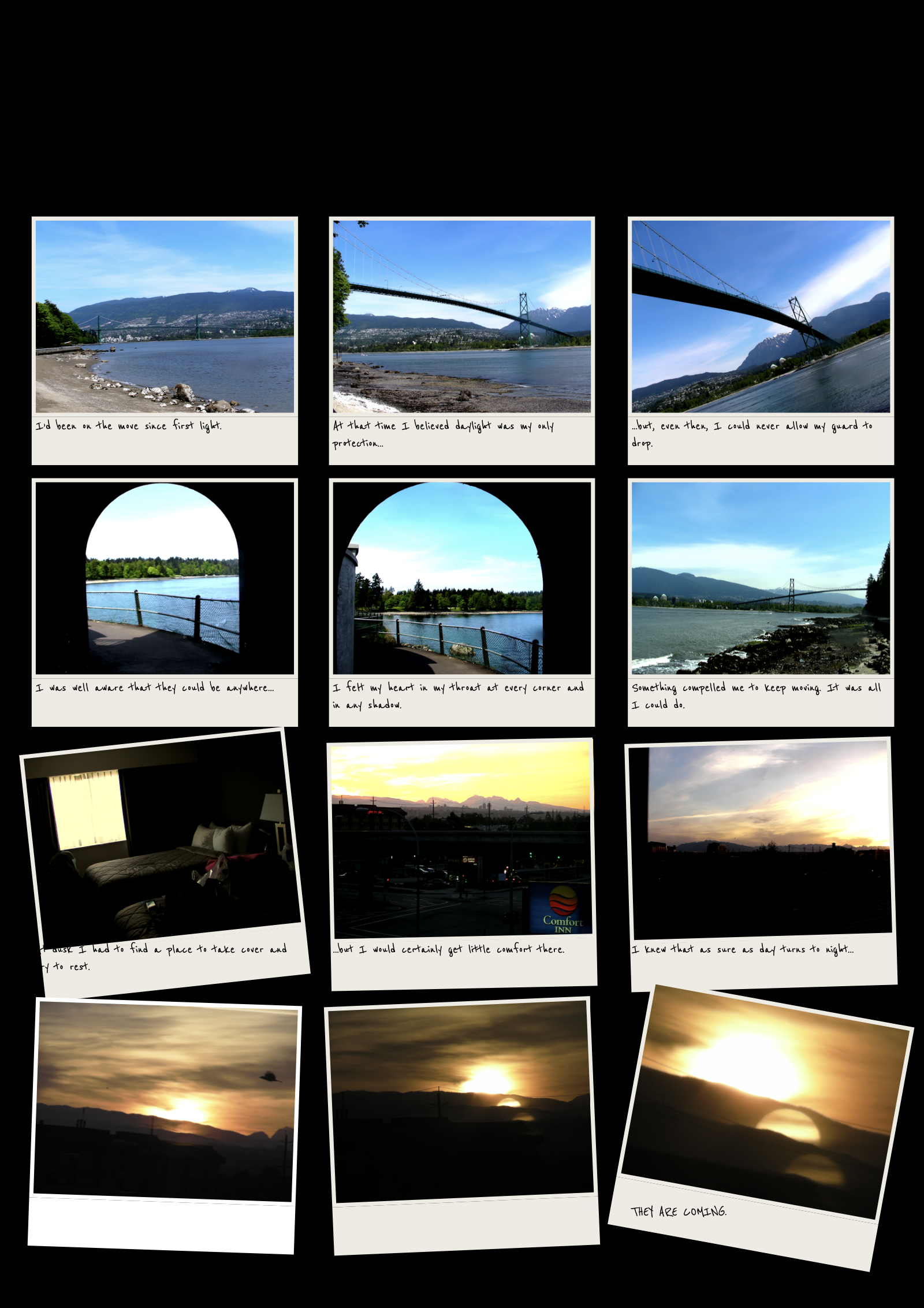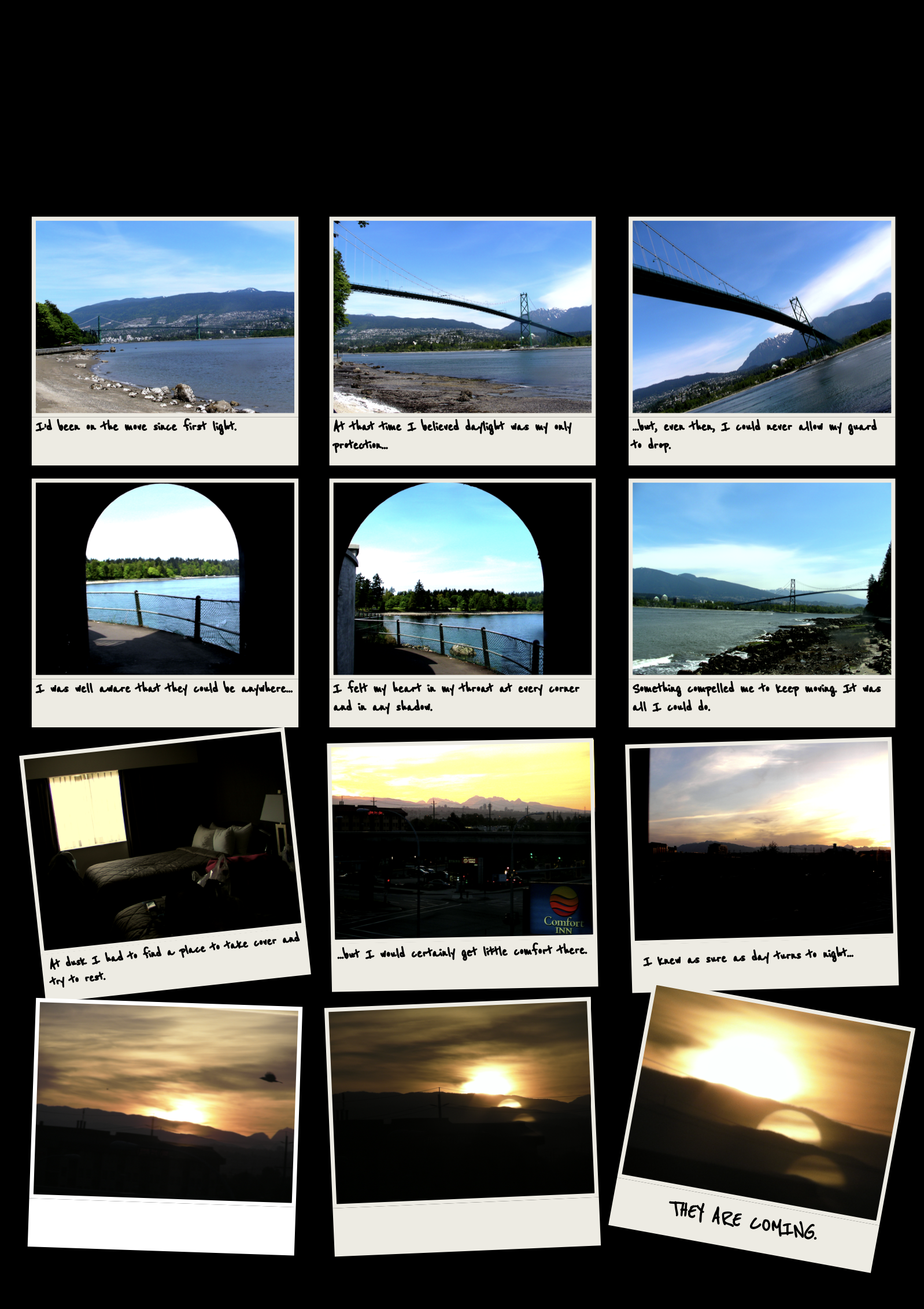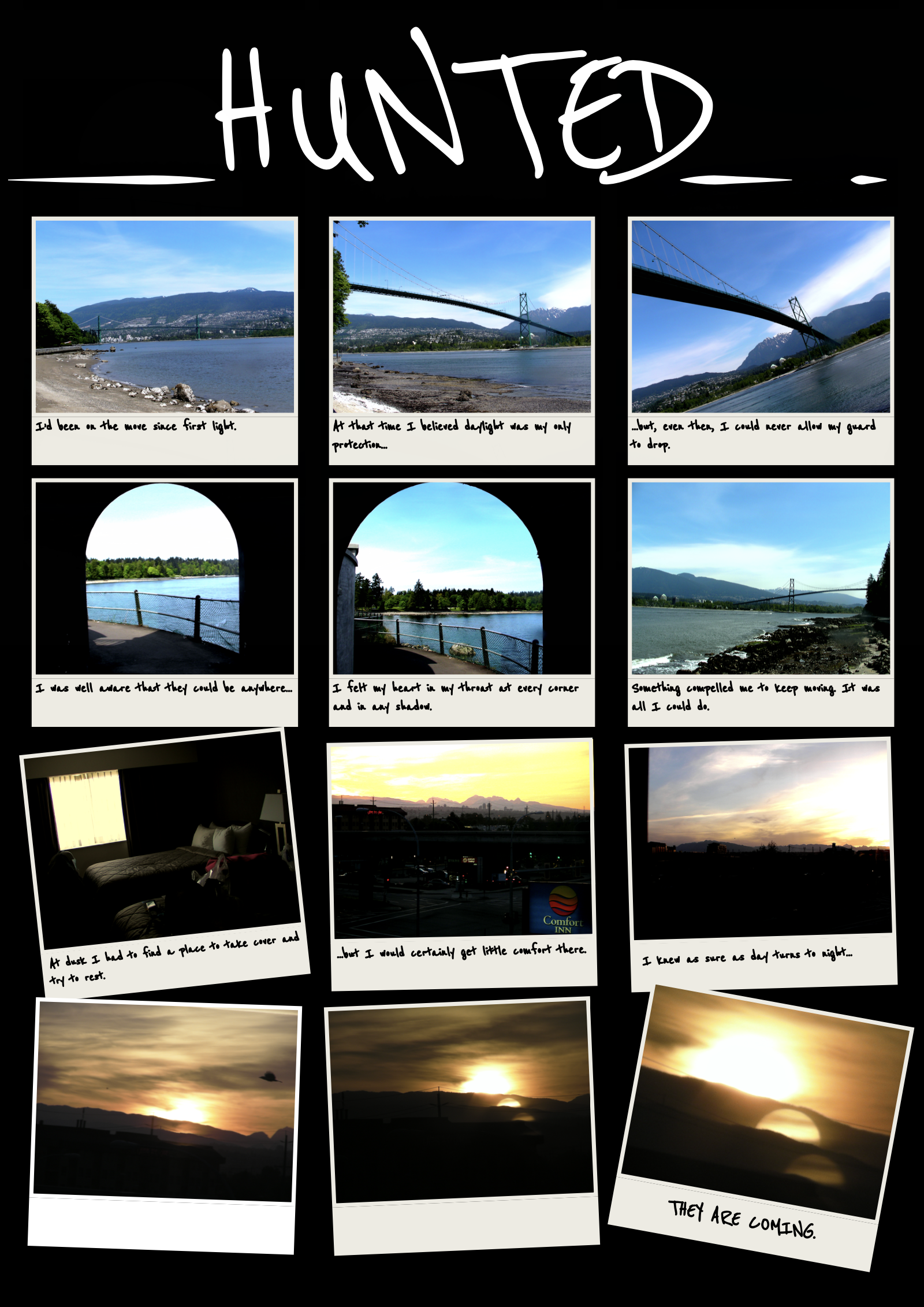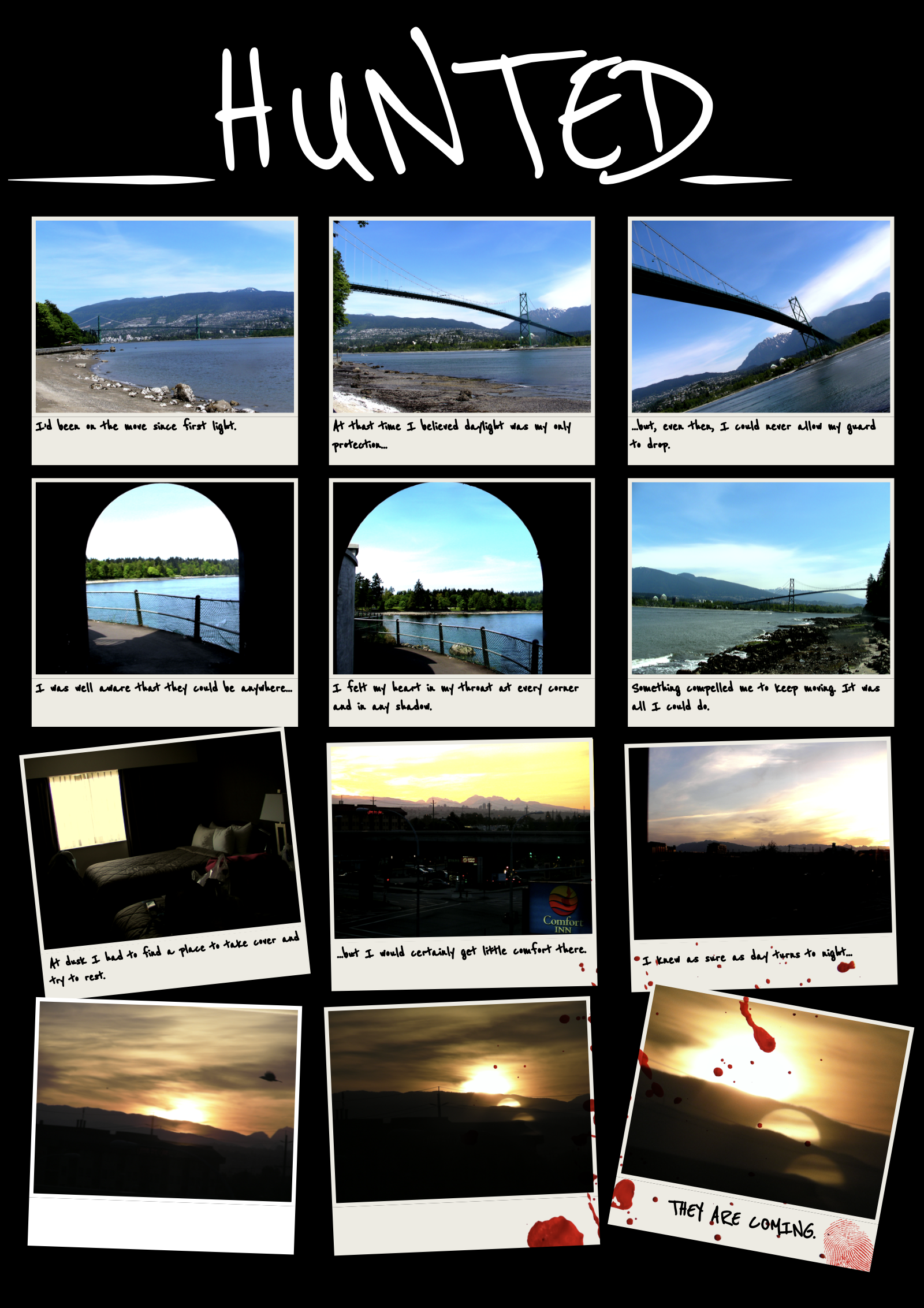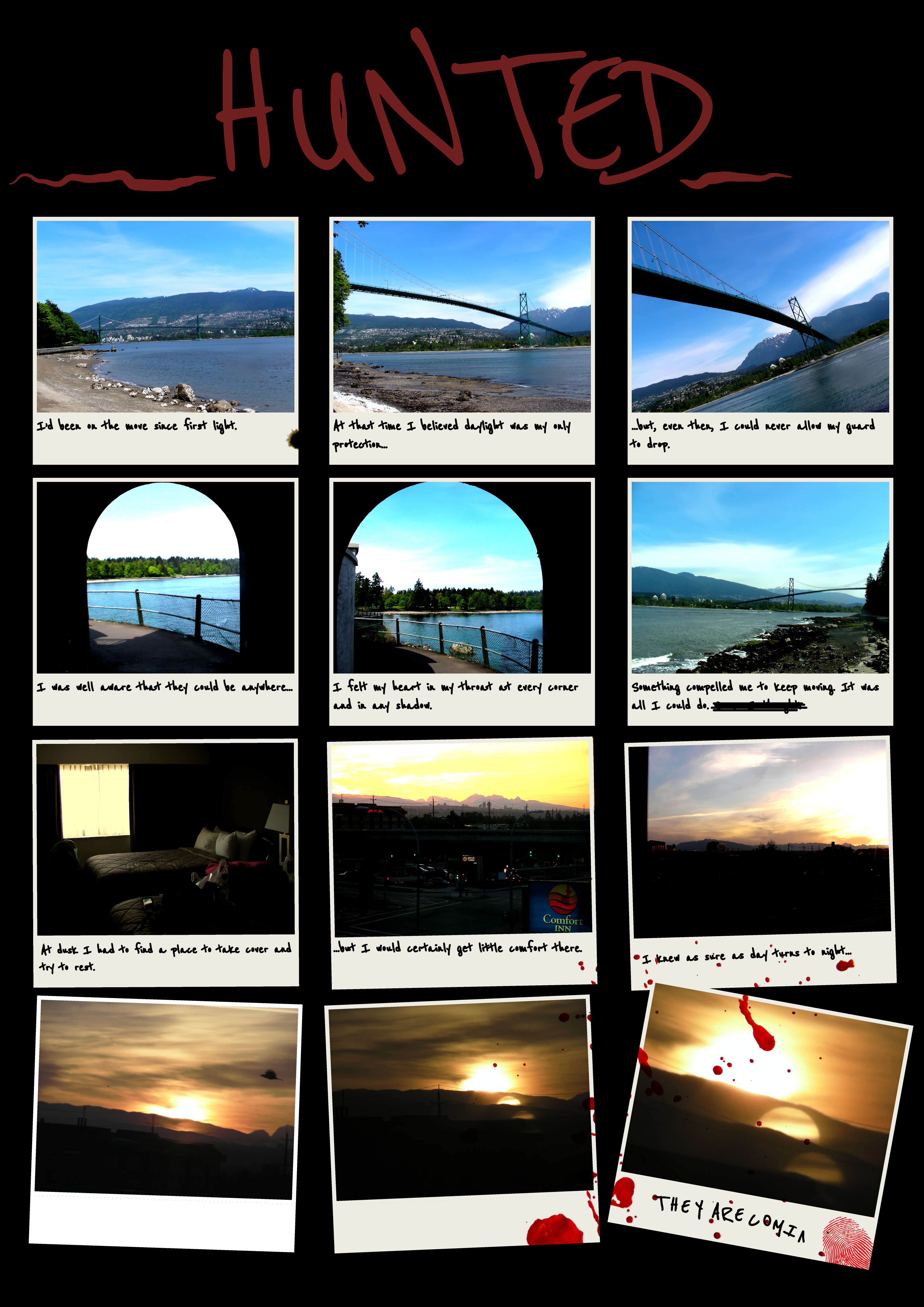Brief
For this exercise you can choose the physical format of what you create.
You may want to make a mini comic or an A3 comic-size story. The important thing is that you use a still camera or your phone to create a photographic narrative.
Your finished exercise could be a silent series of images that tell a narrative like a film storyboard, or it could be a varied collection of images that are related or connected by your writing, more like a visual voiceover. You could use the exercise as preparation for another comics story you have been thinking of making.
Try to consider the framing of the images as you go along; you don’t need to ‘crop’ your photographs to the exact size you want them to be in the finished page when you take them as you can zoom in and edit your photos later to create the final comic panels.
Initial Thoughts
After reading through this exercise at the beginning of the unit, I was not particularly looking forward to it. This was mainly due to the fact that I had convinced myself that I would have to be in the photos ‘acting’ out scenes, which does not appeal to me at all – I like to be behind the scenes! I also did not have access at the time to anybody that could be in the shots for me, so I was at a bit of a loss about what I was going to do.
Additionally, I do not have a particularly good camera or phone so the quality of any photos would not have been of a very high quality at all. I also was conscious that I needed to get on with it as time was ticking away, so I decided to do some research and see if there would be any other examples that could take me down a different route.
Research
I started off by searching for examples of ‘fumetti’ comics, most of which were quite racy, as suggested in the exercise introduction. Also many of the examples were photo-realistic drawings rather than photos. After reading further about fumetti I expanded my research to other examples of photo comics (please see References below), some of which grabbed my attention more. A selection of these were:
Sinister Bedfellows by McKenzee.
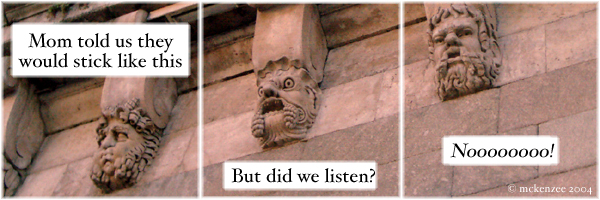
A Softer World by Emily Horne and Joey Comeau.
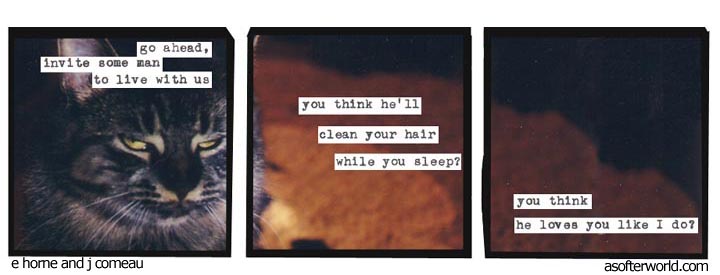
Alien Loves Predator by Bernie Hou.
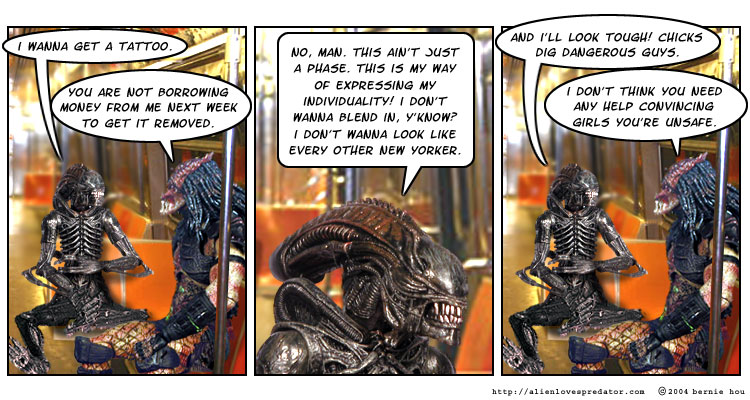
My Milk Toof by Inhae Renee Lee.
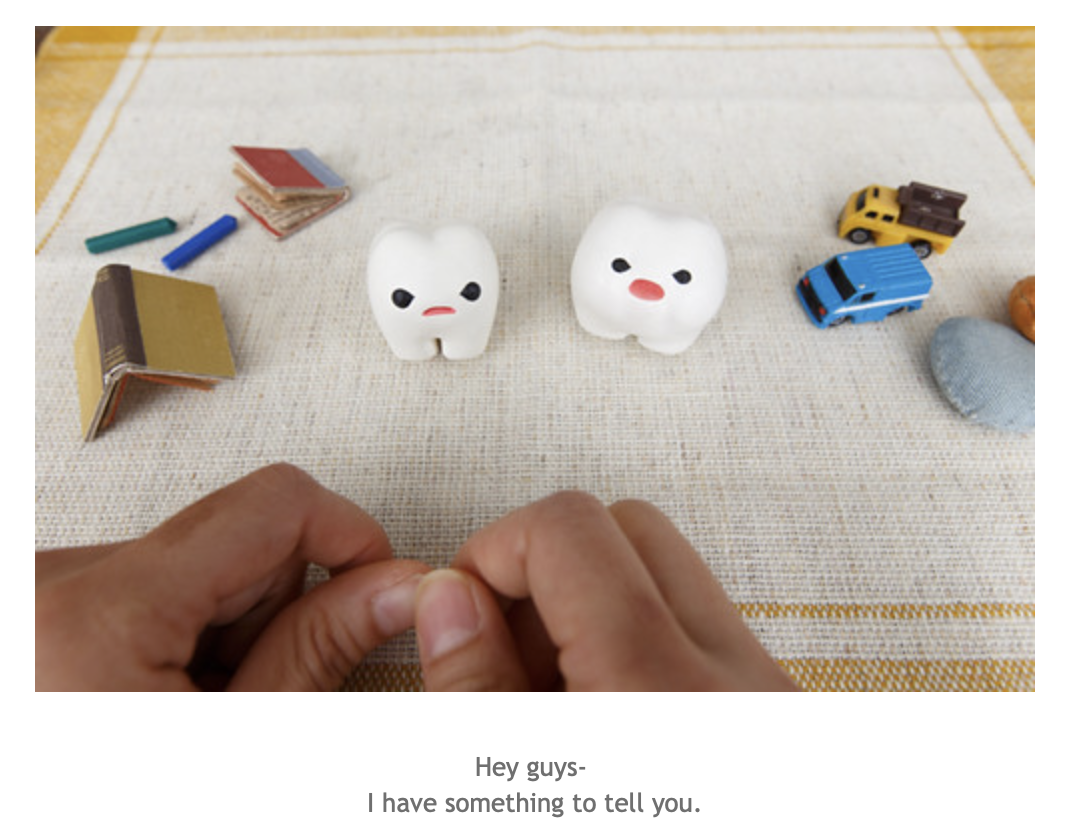
I preferred these examples to those that are based on actors in photographs as I just did not find these, even those with a more serious theme, to be very believable or particularly professional in standard.
The examples of A Softer World and Sinister Bedfellows rely more on the use of text whilst Alien Loves Predator and My Milk Toof use props and text. I liked the use of humour, which is clearly evident in ridiculous set-up of Alien Loves Predator!
My favourite photo comic, though, was My Milk Toof. I really liked everything about it – the concept, the set-up, the characters and the interaction with the human hands. I felt it was more like stills from a stop-motion animation and it completely appealed to me.
If I had the resources (e.g. modelling equipment, props, etc) and a suitable camera, I would definitely of wanted to try and create a photo comic in a similar style as My Milk Toof.
Ideas
After viewing some of the aforementioned examples and being inspired by these, I was quite frustrated that I would not be able to have go at creating something similar due to not having access to required equipment/materials/time. I had some ideas forming that would have been well-suited to the stop-motion animation style of shots.
I was, therefore, back where I started, until I had a thought about using photographs I had taken before and using these in combination with some text that would add a different meaning to them – similar to the examples of A Softer World and Sinister Bedfellows. I decided to go with this idea and started trawling through some photos to see if I could find any that would be suitable.
Planning the Photo Story
Eventually I managed to gather a selection of images from a trip to Vancouver from ten years ago. I arranged these twelve photos in a 3 x 4 layout as below.
I then had to try and think of a narrative that would be believable. At first I found it quite challenging to not feel a bit daft trying to add a dramatic story to something I had a completely different memory of, however, I soon became quite absorbed in the process.
I added some scribbled notes (almost indecipherable afterwards!) to a printout of the images and reshuffled the order several times until I was fairly happy that I had something to work on. The basic idea was that there would be a series of polaroid photographs compiled on a page recording a POV story of someone trying to escape ‘Them’. I would build on the concept as I created the final piece of work.
Creating the Final Photo Story
I set up the photos in Illustrator and gradually added more features to represent the vision I had in mind. I had adjusted the photos, for example, in terms of saturation and contrast, along with cropping several of them too. I chose to use a handwritten style of font (Reanie Beanie) on the ‘polaroids’ and adjusted the rotation of the photos on the lower half of the page to indicate the haste with which they had been ‘pasted’ to the page.
I became more enthusiastic as I worked on my idea.
I added an outline to the font so it would resemble a marker pen as I felt this would look more realistic.
I added a title to the page.
I then found PNGs of a fingerprint and blood spatter which I thought added a final touch of menace to the story.
Final Photo Story
I was genuinely relieved to have reached this point and that I had progressed from having absolutely no idea what I was going to create for this exercise to the the final piece below.
I felt I had fairly successfully connected the narrative with the images, with an overarching sense of unease that builds up to the end. I quite liked how I had taken innocent holiday images and given them entirely different, sinister connotations!
Final Thoughts
As stated, several times, I was very apprehensive about this exercise so I was very pleased that I ended up with a credible photo story. It required quite a bit of imagination, not only in terms of thinking of a story to accompany the final images, but also finding a suitable solution to the many issues I had to overcome in terms of resources and practicalities.
The wider research I carried out certainly opened my eyes to options that would be of interest to me in future projects that might include or be based on photography. And since recovering from the prospect of having to personally be in the photo story, I can also see the artistic benefit of having human models to act out scenes that could be reference images to draw from or to incorporate into final work (if it was done to a professional standard). Alternatively it might be worth considering that as some photo comics are, in my opinion, so cheesy that this could be emphasised and played upon…
References
Comeau, J. and Horne, E. (n.d.). a softer world. [online] a softer world. Available at: http://www.asofterworld.com. [Accessed 20 February 2022].
Design You Trust, (n.d.). Fumetti: The Collection Of Finest Examples Of Sleazy Lowbrow Art The World Has Ever Know. [online] Available at: https://designyoutrust.com/2021/04/fumetti-the-collection-of-finest-examples-of-sleazy-lowbrow-art-the-world-has-ever-known/ [Accessed 20 February 2022].
Help Magazine, (2020). Help Magazine. [online] Available at: http://www.helpmag.com/. [Accessed 20 February 2022].
Hou, B. (2011). Alien Loves Predator. [online] Alien Loves Predator. Available at: http://alienlovespredator.com. [Accessed 20 February 2022].
Leisure Town, (n.d.). Leisure Town. [online] Available at: https://www.leisuretown.com. [Accessed 20 February 2022].
Night Zero, (n.d.). Night Zero – the Photographic Post-Abocalypse. [online] Available at: http://www.nightzero.com. [Accessed 20 February 2022].
Renee Lee, I. (2015). My Milk Toof: Story Archives. [online] My Milk Toof Available at: http://mymilktoof.blogspot.com/p/story-archives.html. [Accessed 20 February 2022].
TV Tropes, (n.d.). Photo Comic. [online] available at: https://tvtropes.org/pmwiki/pmwiki.php/Main/PhotoComic. [Accessed 20 February 2022].
Wikipedia, (n.d.). A Softer World. [online] Available at: https://en.wikipedia.org/wiki/A_Softer_World. [Accessed 20 February 2022].
Wikipedia, (n.d.). Alien Loves Predator. [online] Available at: https://en.wikipedia.org/wiki/Alien_Loves_Predator. [Accessed 20 February 2022].
Wikipedia, (n.d.). Bunty. [online] Available at: https://en.wikipedia.org/wiki/Bunty. [Accessed 20 February 2022].
Wikipedia, (n.d.). Doomlord. [online] Available at: https://en.wikipedia.org/wiki/Doomlord. [Accessed 20 February 2022].
Wikipedia, (n.d.). Help! (magazine). [online] Available at: https://en.wikipedia.org/wiki/Help!_(magazine). [Accessed 20 February 2022].
Wikipedia, (n.d.). Jackie (magazine). [online] Available at: https://en.wikipedia.org/wiki/Jackie_(magazine). [Accessed 20 February 2022].
Wikipedia, (n.d.). Night Zero. [online] Available at: https://en.wikipedia.org/wiki/Night_Zero. [Accessed 20 February 2022].
Wikipedia, (n.d.). Photo Comics. [online] Available at: https://en.wikipedia.org/wiki/Photo_comics. [Accessed 20 February 2022].
